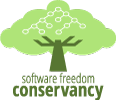Untangling the knots with distributed tracing
Who is this presentation for?
- Software engineers, tech leads, SREs, and DevOps engineers
Level
Description
You’re sick of grepping through logs all day, hunting down the root cause of last night’s outage. Your team dreams of refactoring to a better architecture but struggles to get started amid the mountain of spaghetti code. Your production meets all performance objectives only because you can’t even measure it. Distributed tracing can help you solve all of these problems (and more). But before you can leverage tracing in your code, you first need to actually add the tracing.
Join Isobel Redelmeier to learn how to instrument an existing code base. You’ll start somewhere several levels worse off than “Hello, world” with a ball of mud more akin to reality than the greenfield slate so many tutorials seem to think everyone is perpetually blessed with and discover how to instrument not only your own code but also your favorite libraries and frameworks out there.
The session uses Python, but the concepts should be equally applicable to your preferred language.
Prerequisite knowledge
- A basic understanding of distributed knowledge and backends (e.g., HTTP request/response model, SQL, or other data store)
- Experience coding in Python or another programming language
What you'll learn
- Learn to add distributed tracing to existing systems, instrument OSS libraries and frameworks with tracing, and combine distributed tracing with other observability tooling
- Discover what you get for free or cheap versus when your code needs more effort

Isobel Redelmeier
LightStep
Isobel Redelmeier works on open source software at LightStep, where she focuses on OpenTracing and other observability solutions to improve performance management across distributed systems. She learned firsthand how difficult, and how valuable, observability can be when working at Pivotal, where she pushed code in about 10 languages to different production systems while working with Pivotal Labs. She later focused on security in Cloud Foundry.
Sponsorship Opportunities
For exhibition and sponsorship opportunities, email oscon@oreilly.com
Partner Opportunities
For information on trade opportunities with O'Reilly conferences, email partners@oreilly.com
Contact Us
View a complete list of OSCON contacts
©2019, O'Reilly Media, Inc. • (800) 889-8969 or (707) 827-7019 • Monday-Friday 7:30am-5pm PT • All trademarks and registered trademarks appearing on oreilly.com are the property of their respective owners. • confreg@oreilly.com



































